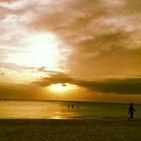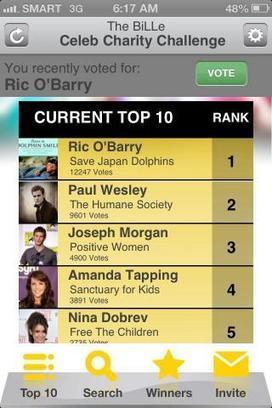See on Scoop.it – Makamundo (Earthly)
Published in the Philippine Online Chronicles
Tuesday, 23 April 2013 15:27 Angela Colmenares
http://www.thepoc.net/poc-presents/the-oy-project/73-poc-youth-articles/...
More than 200 people, mostly environmentalists, celebrated the Earth Day with a whole day coastal clean-up at the Las Pinas-Paranaque Critical Habitat and Ecotourism Area (LPPCHEA) last April 20, 2013.
The coastal clean-up, led by Save Freedom Island Movement (SFIM), Earth Island Institute (EII) and partner organizations, served as a kick-off for a series of activities including photo and art contests, culinary competitions, bird lecture series, nature walk, essay writing, and other activities for the youth running up to the Ocean Month and International Fishermen’s Day in June.
According to SFIM & EII, the campaign seeks to promote awareness and appreciation of the environment as well as a demonstration of protection and restoration activities. The campaign is aimed to inspire people to clean up their surroundings and to sound the alarm regarding worsening environmental depletion, the group said.
The Importance of Freedom Island
The Las Pinas-Paranaque Critical Habitat and Ecotourism Area (LPPCHEA), also known as Freedom Island, is a bird sanctuary in an urban setting that was recently added to the Ramsar List of Wetlands of International Importance. It is said to be the last mangrove area in the National Capital Region (NCR) and has recently become controversial due to a widely-opposed P14 billion reclamation plan.
Groups say this will endanger its biodiversity and will spell peril for the livelihood of local fisherfolks depending on its rich marine resources.
The mangrove ecosystem serves as a feeding, nesting and nursery grounds for commercially important fish, prawns, mollusks, crabs and shellfish. High levels of organic matter found in the mangrove ecosystem means high productivity; this means more diverse range of living species can be supported.
It also functions as a habitat area for a wide array of organisms from planktons to birds. About more than 80 species of endemic and migratory birds were documented by the Wild Bird Club of the Philippines (WBCP) and DENR-NCR in the area. The list includes the already vulnerable Philippine Duck, Chinese Egret and the Pied Avocet.
Mangroves are said to be the Earth’s “natural filtering system,” that absorbs pollutants like heavy metals, sewage drains, and toxic substances; stabilizes coastlines by catching sediments washed downstream; and help protect coral reefs and sea grasses from being smothered by such pollutants. It also forms a natural barrier, which protects the shore from sea surges especially during typhoons, and absorbs carbon dioxide that lessens the impact of global warming.
However, mangrove forests in Metro Manila were diminished years ago by massive reclamation projects. Threats of reclamation, relentless dumping of wastes and pollution continue to remain.
A continuing battle for Freedom Island and children
The inclusion of Freedom Island to the RAMSAR list is a small victory for environmental groups and concerned citizens calling for the protection of the critical animal habitat.
“But the battle isn’t over yet. Proponents of the reclamation projects in Manila Bay are still pushing for their plan. While the government is more concerned of the profit that foreign investors would generate, thousands of families would be affected by loss of livelihood and shelter, floods, storm surges, and other environmental disasters that reclamations may cause,” says Glacy Macabale of Save Freedom Island Movement.
To demonstrate the saying “we do not inherit the earth from our ancestors, but borrow it from our children,” a group of children from the Bulungan Market community of Paranaque wore “environmental head gears” and performed an Earth dance to jumpstart the program.
“We live in very critical times. Our actions to save the environment now will have an impact on how our children will live tomorrow. We all need to act now,” Trixie Concepcion of Earth Island Institute said.
“This action is important as choosing the next leaders in the future. Now that we are in the election period, we must choose the right leaders with good track records on protecting the environment and the people. We are doing our part, the government should also do theirs,” Concepcion added.
Among the personalities and organizations who joined and supported the coastal clean-up event are Ms. Earth Philippines 2013 candidates, actor Raymond Bagatsing, Villar Foundation, Office of Bayan Muna Rep. Teddy Casino, Akap-Bata Partylist, Kabataan Partylist, local fisherfolks from the Unified Marketing Services Cooperative, Stewards of Creation, HBC employees, Young Nacionalistas, Smart Mountaineers, UP Minggan, and volunteers from different environmental groups.
Photos by Angela Colmenares
See on www.earthislandph.org









